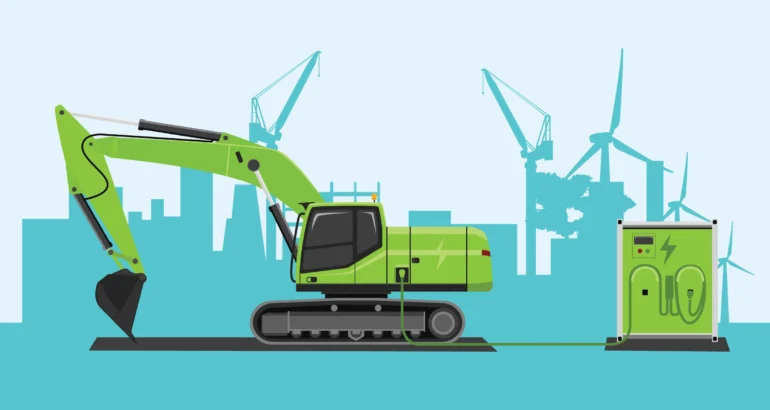The Surge in Power Demand
As the world becomes more electrified, the demand for power increases, pushing for higher system voltages to optimize efficiency and minimize losses. Driving this heightened demand is the twofold transformation occurring in recent decades:
- Transitioning from combustion – Regulatory measures have supercharged the switch from combustion to electric drive systems.
- Shifting towards lithium – With lower maintenance costs, longer lifespan, and improved safety via battery management systems (BMS), lithium batteries are redefining the norms.
As foundational battery technology improves, the upgrade from lead acid-based electric drive trains to lithium-ion systems has resulted in a nominal voltage surge and need for power—particularly in off-highway applications.
The Key to Navigating the Transition: Standardization
Learning from sectors that once relied heavily on custom design solutions, it’s evident that standardization paves the way for broader applicability and more efficient implementation.
This pivot to standardized battery pack and module sizes offers multiple benefits, such as accelerated market entry, cost reduction, and full battery pack certification.
Transitioning from immediate advantages, the steps to achieve standardization can be distilled into four guiding tenets:
- Standard battery sizes
- Internal component compatibility
- Streamlined hardware installation
- Integration of data analytics
In the wake of a rapidly evolving energy landscape, these tenets not only guide efficient transitions but also ensure that systems are future-proof, optimized, and aligned with industry progression.
Elements to Optimal Battery Design
A foundational aspect of standardization lies in the battery design itself, from size to internal composition. Note the following design elements that contribute to this:
Sizing
In addition to modularity and scalability, standardized sizing on battery packs enhances the flexibility of installation:
- Unified installation process across a variety of vehicle dimensions, profiles, and enclosures
- Lightweight and ergonomic design, facilitating single-person installation and servicing
- Modular installation allows for units to serve as strategic counterweights
Proper sizing ensures optimized power and performance based on the intended machine duty cycle.
This article is excerpted from a webinar by Oliver Bald and Santiago Antolin of Inventus Power, a global company in advanced battery systems. The webinar was presented by ZAPI Group, a company whose subsidiary Delta-Q Technologies provides battery charging solutions.
To see the webinar in its entirety, visit:https://www.zapigroup.com/en/blog/accelerating-electrification-of-off-highway-equipment-through-standardization









